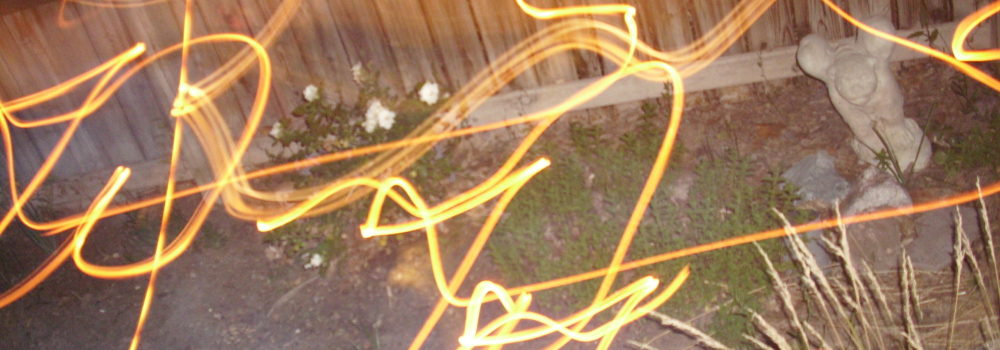The Field: The Reality of Things

The following is excerpted from The Basic Code of the Universe: The Science of the Invisible in Physics, Medicine and Spirituality,published by Inner Traditions.
Mechanistic thought conceptualized solid particles moving in a vacuum. Then came field physics, and prevailing notions were shattered once again. In the mid-nineteenth century, Michael Faraday introduced the idea of a field as “a space around a source of electromagnetic energy.” Opposing the concept of “full and void” from atomism, Faraday suggested the idea of “matter and force diffused in space,” according to precise lines of force. His was a nonmaterial vision of physical phenomena! It is with Faraday that fields became defined as physical dimensions in zones of temporal space. In the following century, Einstein extended the field principle with the inclusion of gravity: the universe is thus considered held in a single gravitational field that curves in proximity to matter.
Of the four elements of Pannaria, the field is the least studied but the most interesting. Mass could be matter combined with energy, which is an expression of the field. In that case mass would be the formation through which the senses perceive the field, the reality that the “veil of Maya” hides, as some insightful sages of India, along with some Western philosophers, have put it. Plato contrasted the truth (alètheia) with fiction, opinion, illusion (doxa). The senses fall under the category of doxa, projection, the shadow of the alètheia. The senses enable us to perceive only impressions, while the truth of the universe is unknowable. “Nature loves to hide” (ϕύσις κρύπτεσθαι φιλεῖ), writes Heraclitus of Ephesus.* But a philosopher must try to reach it somehow, because truth is very sublime.
Plato used the “myth of the cave,” in which he describes a scene of slaves chained in a cave, who are forced to watch a strange “film” of speaking shadows on a wall. They believe what they see is real until one slave escapes and discovers an unexpected world: what the prisoners think are people are only the shadows of statues of humans and animals being carried on the shoulders of real men and women passing by; the slaves were hearing only their voices.5 The freed slave met the other side of things. Centuries later, the neo-Platonist Giordano Bruno of the Renaissance wrote De Umbris Idearum (The Shadows of Ideas), and indeed Platonic thought has also been revalued by some quantum physicists. The physical bodies that we can touch, see, and hear are only the shadows in the cave. Their fields, though they elude our senses, are in fact the true reality of the bodies. A researcher has to leave the cave in order to explore the other side of things.
Every physical body can be seen as an event that is constantly changing on the world stage, and the director of the changes is precisely the field, which the ancient sages identified with fire, a great natural alchemist. The quantum field is everywhere. The particles are not corpuscular, but local condensations of the field. Solid? No. They are quanta, but they are packets of energy of the field’s vibrations. The protons are vibrations in the field of the protons, electrons in that of the electrons, and so on. It is revolutionary in the history of human thinking to imagine that the world is not built with solid bricks, but rather with vibration, energy. Matter is a particular vibration of its own field, which overturns everything so far studied in school.
Since our childhood we have wanted to humanize the world, and we imagine even the microscopic driving energies of life as solid objects. But things are not like that. The Italian doctor and physicist Massimo Corbucci writes that the atom is an abyss filled with electrons and the particles of the nucleus.6 The harder you search the abyss, the more you realize that mass itself does not exist. What exists is a game of attraction and repulsion (therefore a balance) between different polarities of charge, between “breathing emptiness.”
The field is pulsation in the emptiness, that is, vibrating emptiness, a pulsating vacuum. The particles that make up mass might actually be disturbances of the field, ripples in the vacuum. We are not far from the discourse of the strings. Now consider that the first description of matter, as being like “the crest of a wave, curling like the sea,” was written as early as the hermetic treatises of the second century C.E.! It is only these disturbances that are perceived by the senses, which then turn them into perceptions-visual, tactile, auditory-namely feelings from forms, bodies, heat, sound, light.
What appear to us as particles are probably field fluctuations, in which some of a field’s regions oppose one another (for example, the protons and the electrons). In physics’ “double slit” experiment, an electron sent toward a plate with two parallel slits close to each other passes through both simultaneously, suggesting that the electron is traveling more like a wave than a particle. Actually, an electron can be in either wave or particle form, a variation of field fluctuation.
During our journey, we will discover further that the fields of physical bodies have extraordinary properties, that they are “organized masses” and that to date nobody has been able to uncover what organizes them and how. The physical, chemical, and biological sciences continue to largely ignore these questions. In fact, the field may not only be the result of what happens to mass, but rather the director of what happens to mass. To begin to understand how this can be, we are aided by the concept of morphogenetic fields, which offer us insight into fields with organizing disposition.
to read more, go to: http://www.realitysandwich.com/field_reality_things



 Sean Carroll is a
Sean Carroll is a 